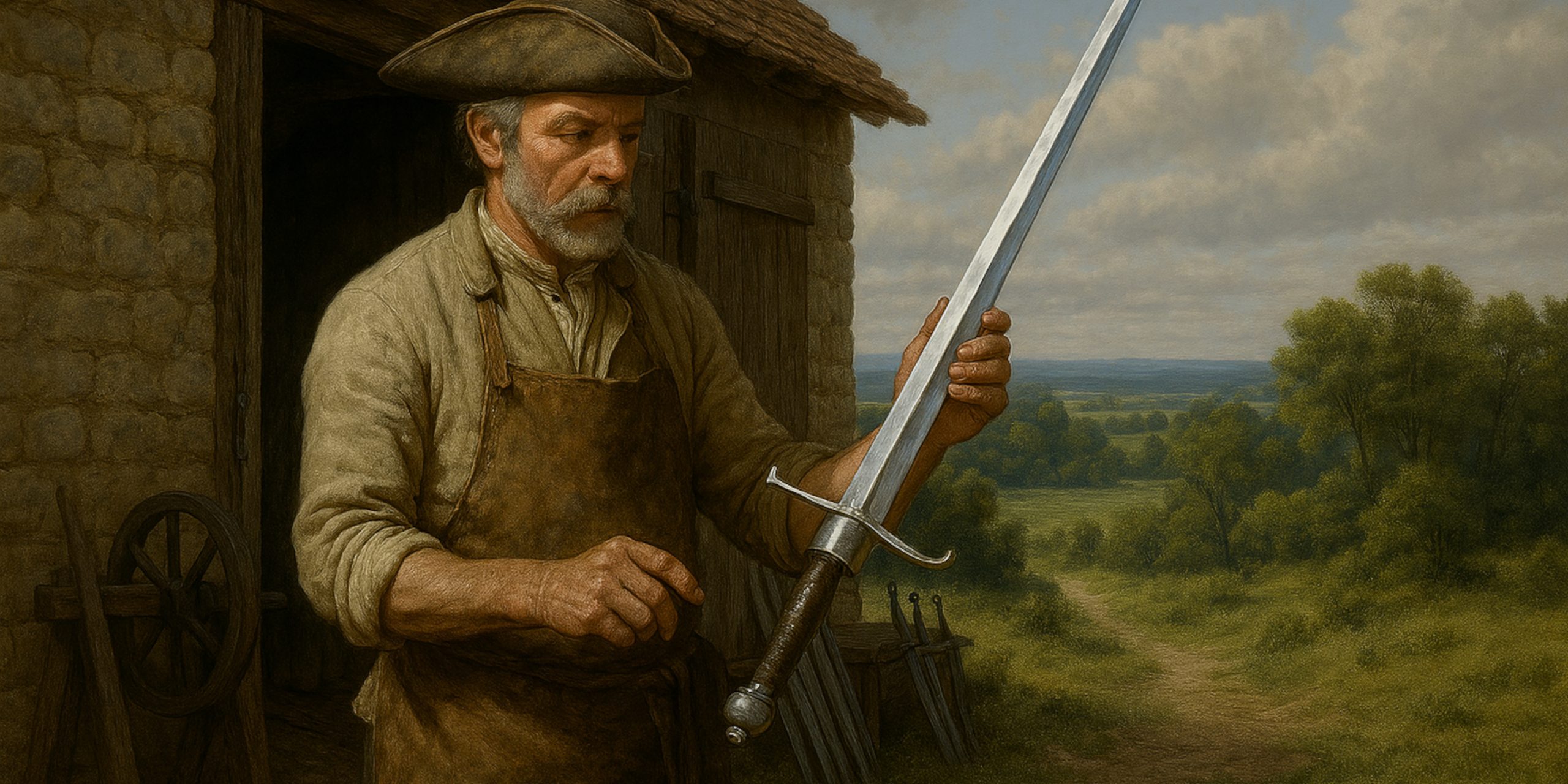
André Boucher was a respected French swordsmith active during the late 17th and early 18th centuries. Though not as mythologised as names like Andrea Ferrara or Solingen’s great smiths, Boucher represents the high standards of French blade-making during the reign of Louis XIV and the early 18th century. His work reflects the evolution of European swords from military practicality to refined status symbols in court and officer circles.
Origins and Identity
Precise biographical records on André Boucher are limited, but he is known to have worked in France at a time when the country was a centre of excellence in edged weapon production. Likely based in a blade-making hub such as Klingenthal or Saint-Étienne, Boucher operated during the height of royal armoury expansion, when the French monarchy invested heavily in domestic arms manufacture.
His blades are typically marked with the name “A. BOUCHER” or “ANDRÉ BOUCHER”, often accompanied by symbolic motifs such as fleurs-de-lis or suns, consistent with the decorative vocabulary of the Bourbon court. It is not clear whether he operated a large workshop or worked independently, but the quality and survival of his blades suggest he supplied swords to both military officers and members of the aristocracy.
The Boucher Blade
Boucher’s swords are representative of late 17th and early 18th-century French design, a period that saw a shift from broad-bladed military weapons to lighter, more elegant swords used for duelling and formal wear. Characteristics include:
- Slim, tapering blades with fine points, often optimised for thrusting rather than cutting
- Single fullers or hollow-ground sections to reduce weight without compromising stiffness
- Inscribed or stamped markings, with some examples featuring decorative inlays or engraved symbols
- Association with swept-hilt rapiers, transitional smallswords, and officer’s swords
- High-quality steel consistent with the production standards of Klingenthal after its establishment in 1730, though Boucher’s activity likely predates this centralisation
The emphasis in Boucher’s work appears to be balance and refinement, suited to the fencing styles and etiquette of the French court and officer class.
Military and Aristocratic Use
France during Boucher’s lifetime was heavily militarised under the rule of Louis XIV. Officers in the French army were expected to carry swords not just for combat but as symbols of their rank and social standing. Swordsmanship itself was part of a noble education, and weapon makers like Boucher catered to this expectation.
His blades would have found favour among cavalry officers, members of the Maison du Roi, and noblemen seeking weapons that combined utility with refinement. While not designed for the brutal, muddy battlefield work of earlier centuries, these swords were still lethal in the hands of a skilled fencer, particularly in the context of personal duels and urban confrontations.
Craftsmanship and Reputation
The surviving examples of Boucher-marked swords point to a smith who prioritised consistent quality. His work does not overwhelm with excessive ornamentation but reveals an understanding of proportion, temper, and detail. The inscriptions are often clean and carefully placed, with clear attention given to alignment and presentation.
Boucher’s name is less frequently encountered than mass producers from later periods, but this may reflect smaller-scale production rather than lower impact. In fact, the scarcity of his work enhances its value among collectors today, particularly those focused on transitional rapiers and smallswords.
Legacy and Historical Relevance
André Boucher occupies a particular place in the timeline of European sword-making: after the heavy battlefield blades of the 16th century but before the widespread mechanisation of the 19th. He worked during a time when a sword still defined a gentleman, and when France led Europe in both martial culture and courtly display.
His blades, while subtle in style, encapsulate this blend of elegance and deadliness. Today, examples marked with his name are held in both public and private collections, sometimes misattributed due to the relative obscurity of his legacy compared to better-documented smiths.
Though less known by name, Boucher’s swords reflect the values of his age: skill, control, and disciplined force. His work serves as a reminder that even in times of courtly formality, the sword remained a personal and political instrument, one made only by those with the craft to be trusted.



